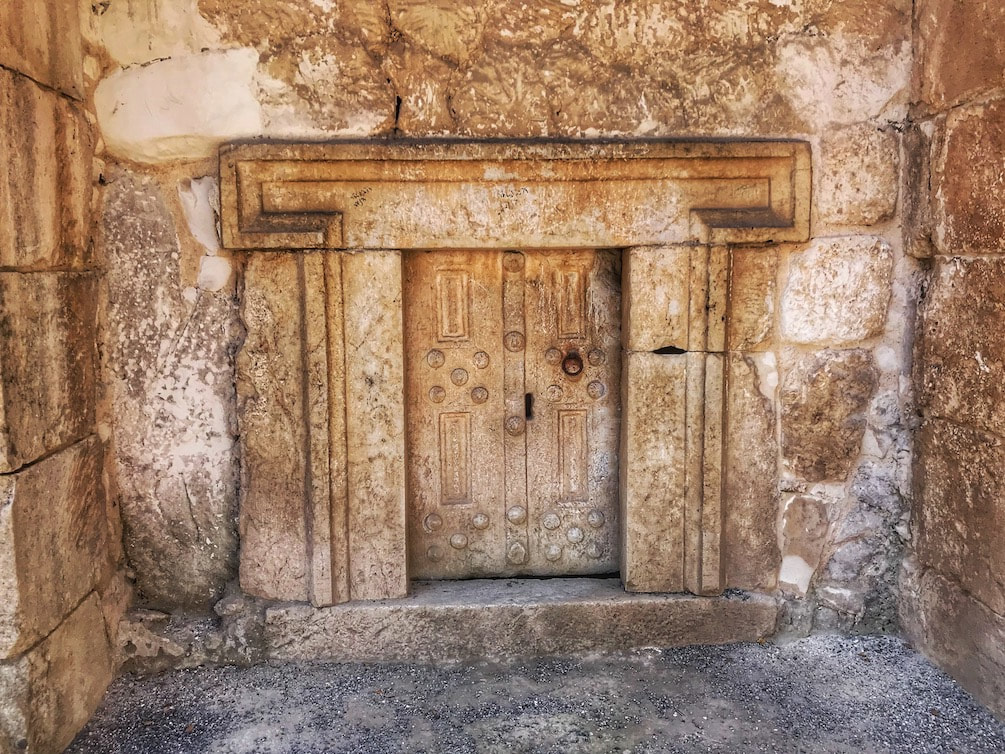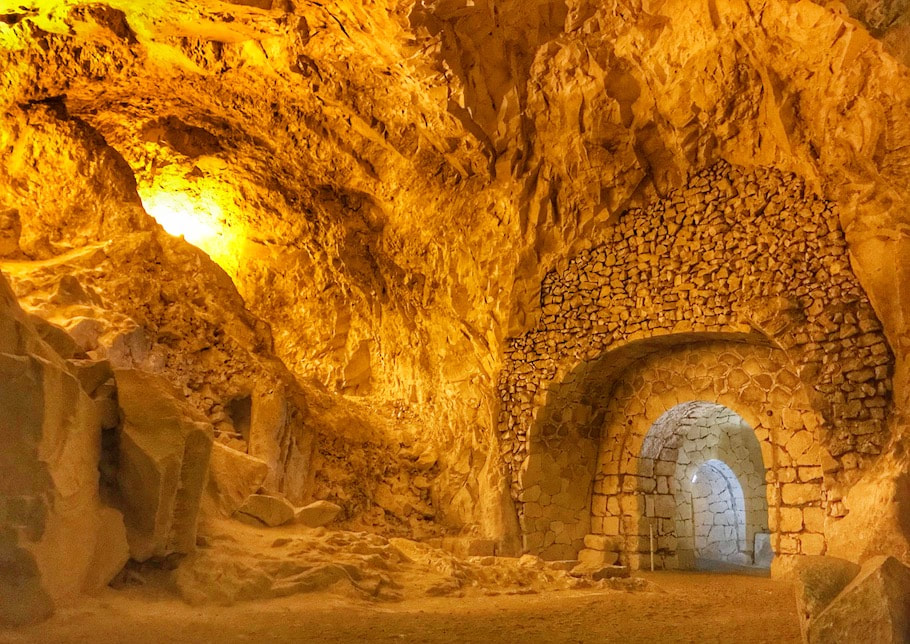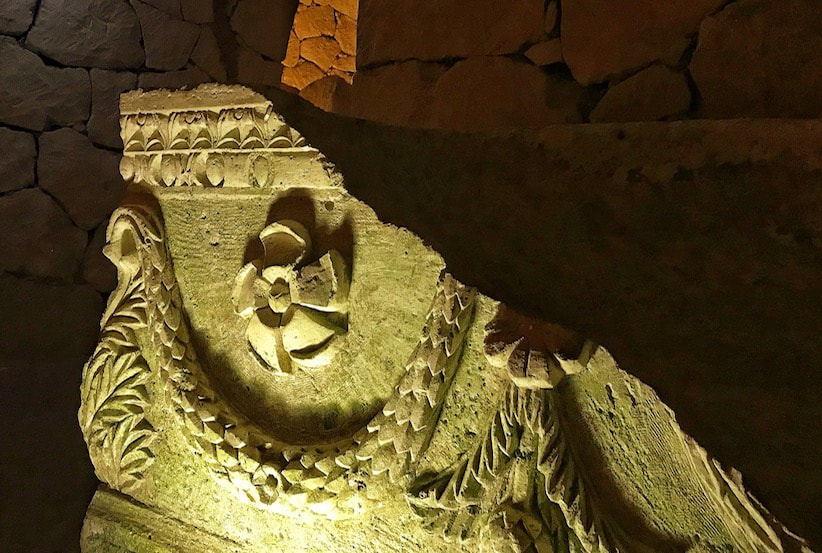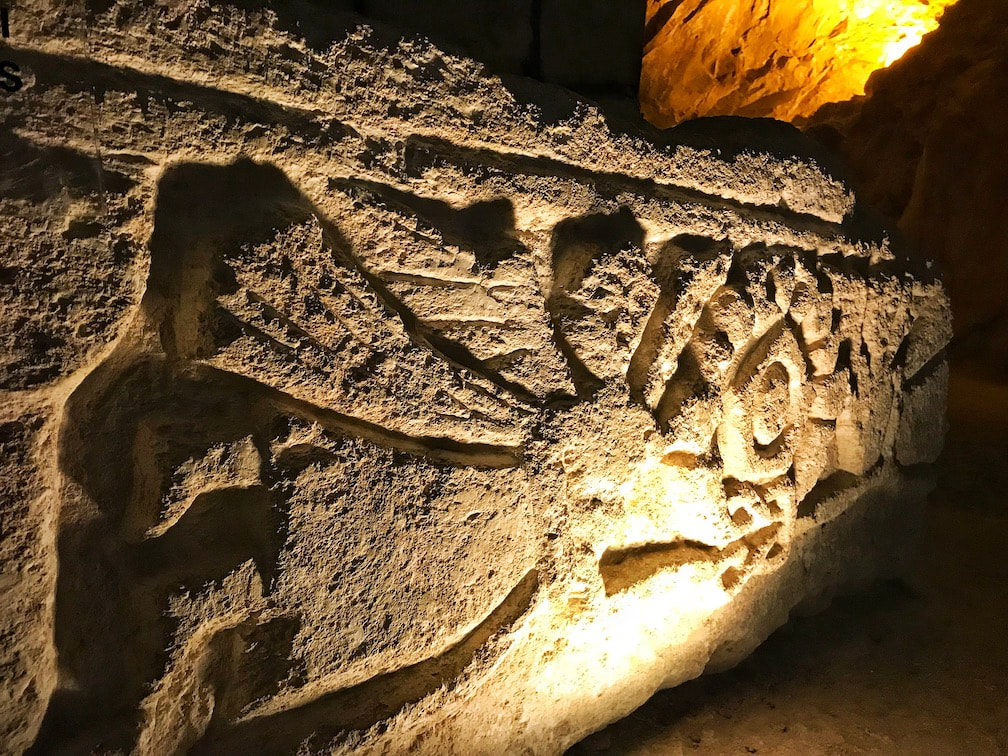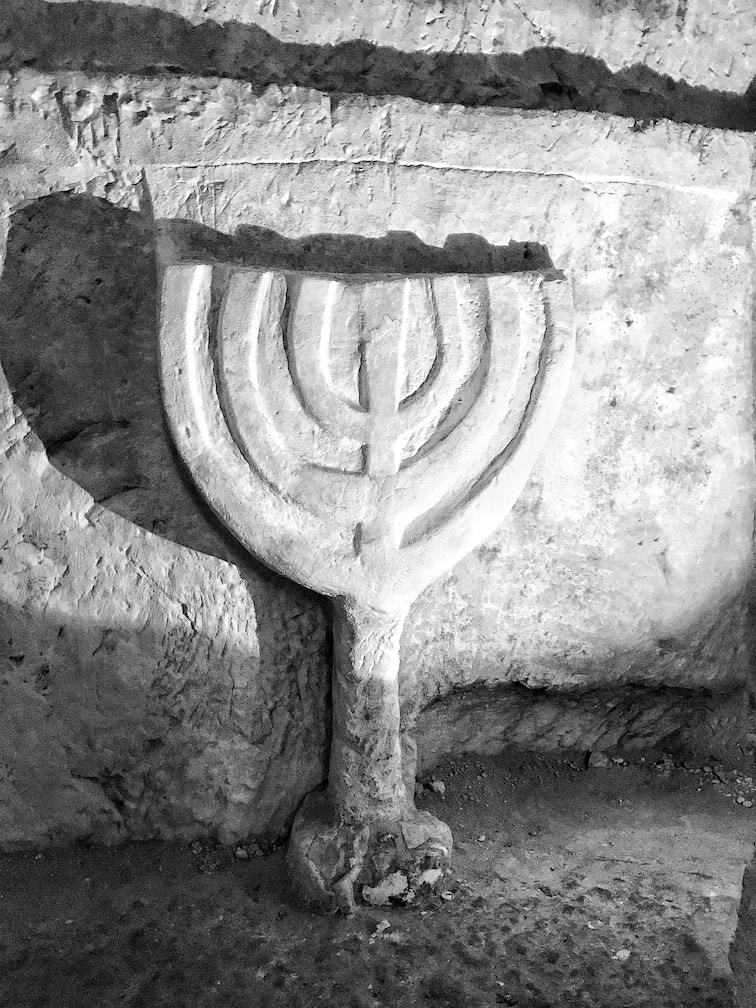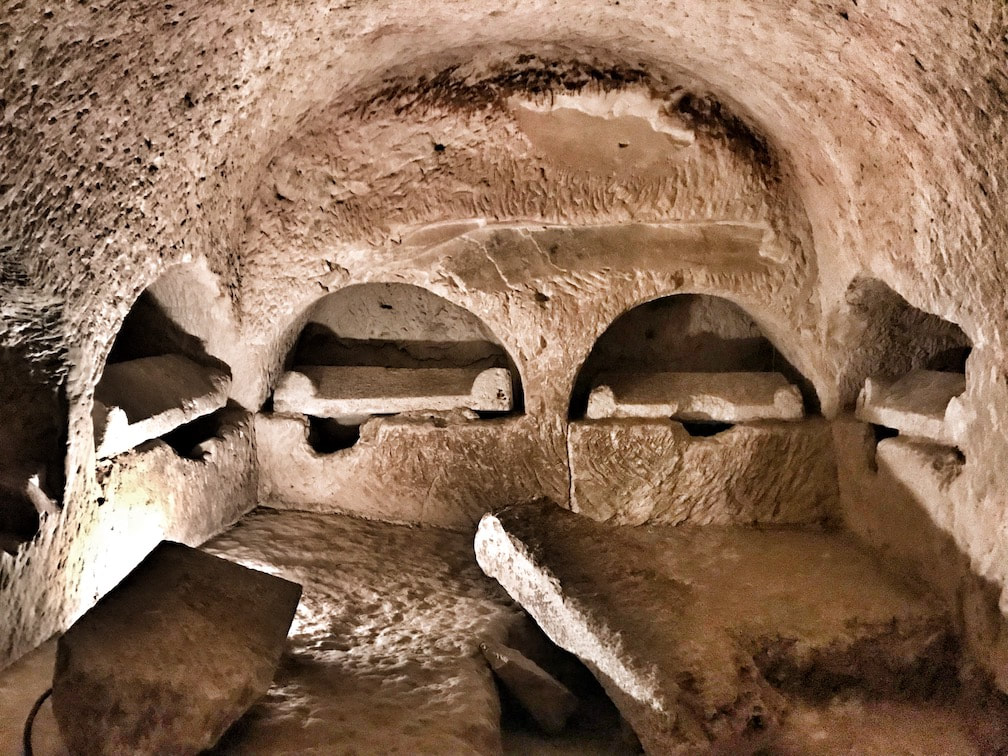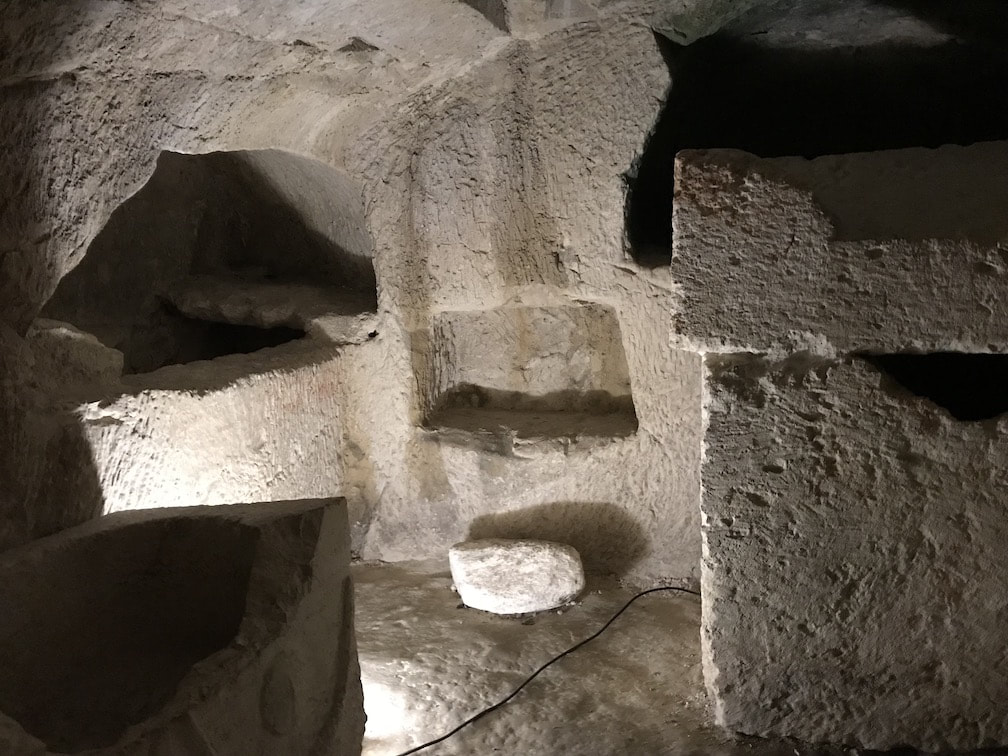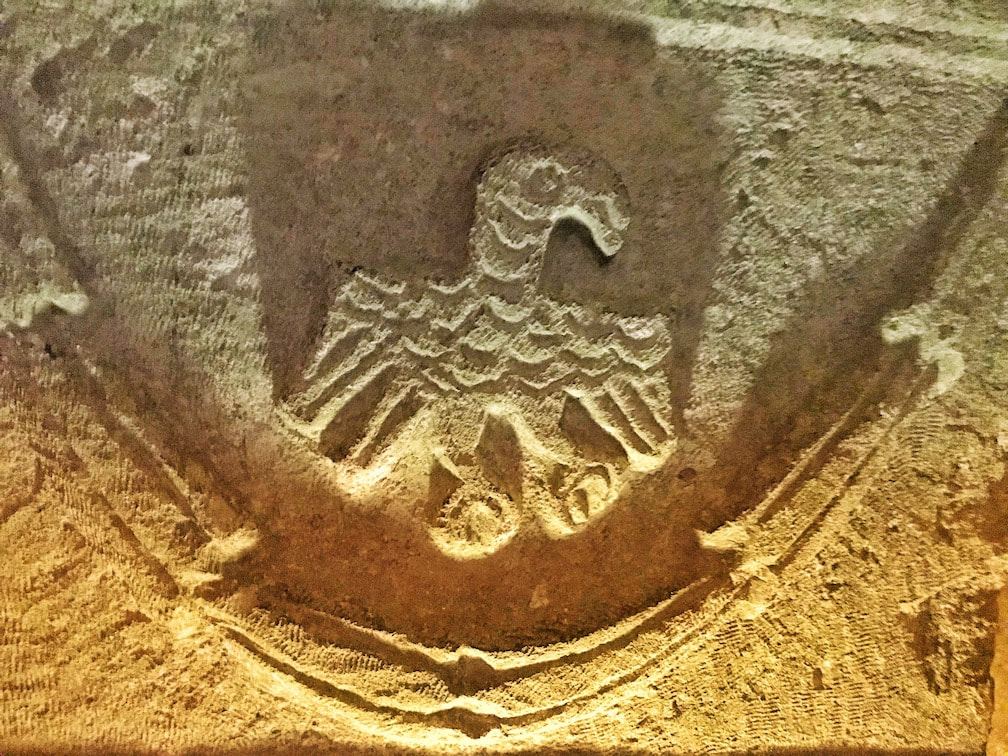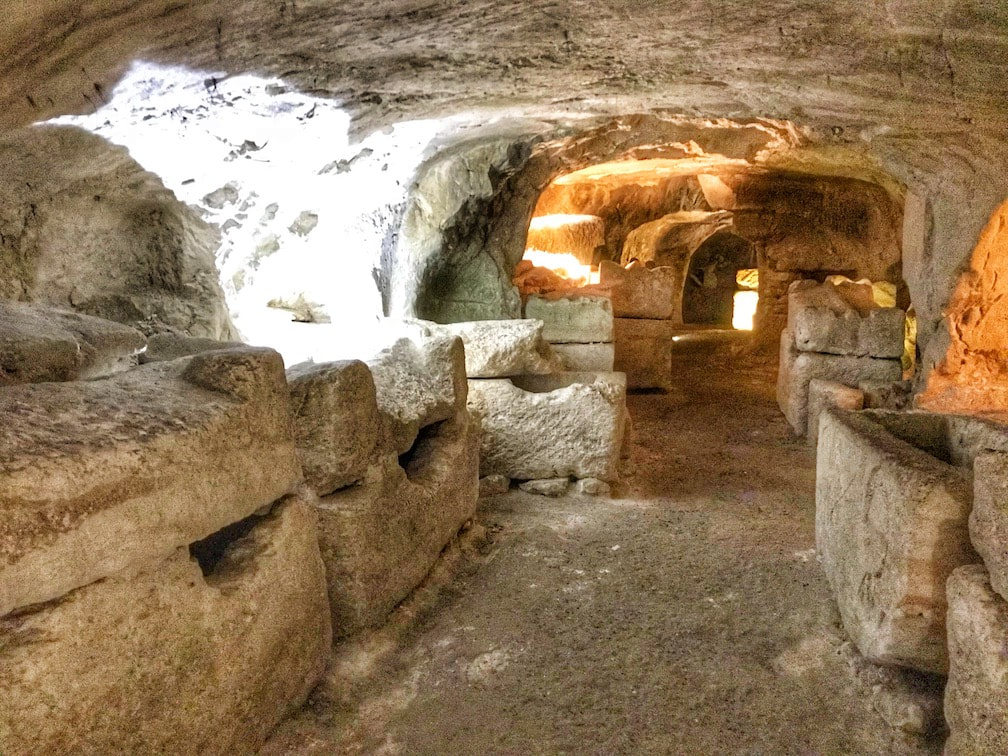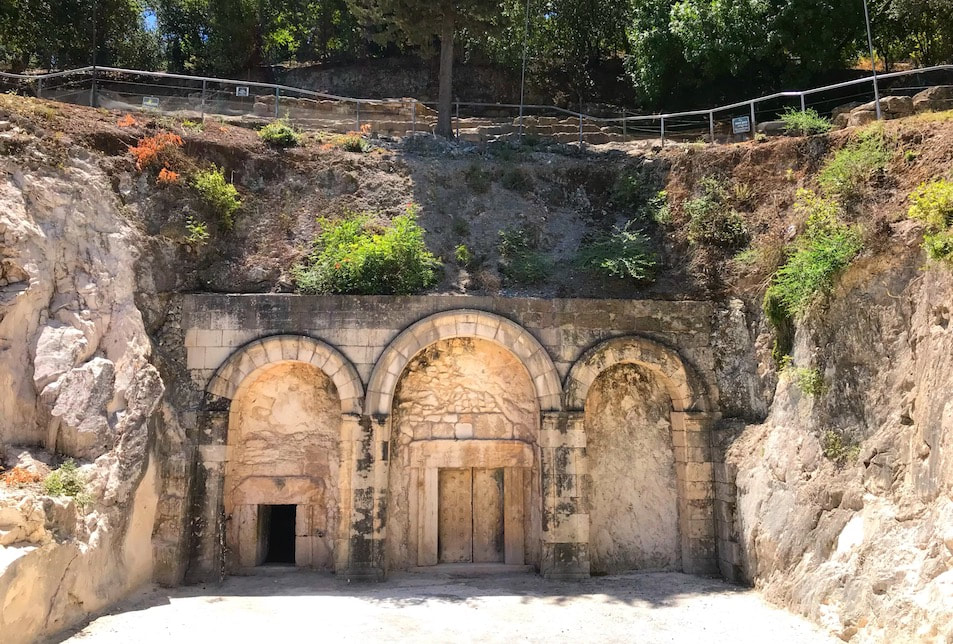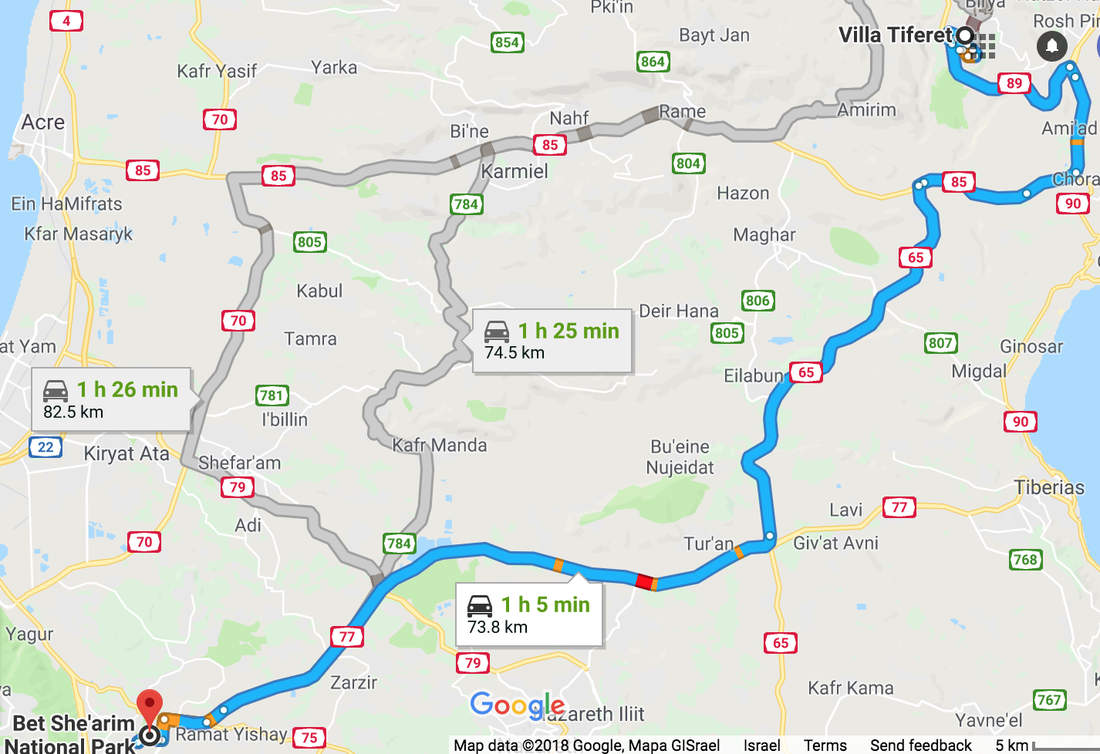Beit She'arim UNESCO Site
|
If you are looking for a day trip from Tzfat in the Galilee, Beit Shearim is a must see.
Located just an hour’s drive southwest of Safed, this national park is a one-of-a-kind in Israel, if not in the world. Beit Shearim, meaning house of gates in Hebrew, is an ancient Roman town with a necropolis of some 30 underground catacombs. The densest burial compound in the Roman World and in Israel, it became a UNESCO World Heritage Site in 2015. |
|
Situated in the hills amidst oak trees, the site is calm and serene. It is flanked by Mount Carmel, and on the other side the fertile valleys of the Lower Galilee. Josephus Flavius wrote that this town was part of an estate belonging to the daughter of King Agrippa.
Remains of the town date back to the second century and are spread across 10 hectares. A synagogue, study house, wall, gate and olive press have been discovered. |
Glass artifacts, including a large pane of glass, have also been uncovered, proving that there was once a thriving glass industry here. The town was destroyed and burned in the fourth century.
|
However, the most interesting part of the visit is to the underground catacombs set in the hillsides. (This is also a great outing on a hot summer day as the catacombs are pleasantly cool.)
The catacombs are entered via a courtyard and though a large stone door. Inside, marble and limestone sarcophagi are set in alcoves with inscriptions and symbols carved into them. |
To date, some 300 inscriptions have been uncovered in four languages including Greek, Aramaic, Hebrew and Palmyrene.
|
This became a sought-after burial spot after Rabbi Yehuda Hanassi asked to be buried here. (In these times, burials were not permitted in Jerusalem). Rav Hanassi, popularly known as The Rabbi, was the compiler of the Mishnah and head of the Sanhedrin. He used to live in Beit Shearim but died in 220 in Tzippori. After his burial, bodies were brought from as far as Syria, Yemen and the Phoenician coast to be buried here.
|
As you walk through the burial caves, look at the well-preserved inscriptions and symbols carved into the limestone; family ties and professions can be seen along with menorahs, palm branches shofar and arks.
The park is open from 8am to 5pm, April to September; and from 8 am to 4 pm, October through March.
You can combine Beit Shearim with a visit to Moshav Nahalal and the Lavido Visitor Center. Here you can stroll through herb gardens and buy natural skincare products.
Also nearby is the picturesque village of Beit Lehem Haglilit (once a Templar colony) plus a wonderful spice and herb farm called Derech Hatavlinim with a huge selection of dried herbs, spice blends and tea infusions.
The park is open from 8am to 5pm, April to September; and from 8 am to 4 pm, October through March.
You can combine Beit Shearim with a visit to Moshav Nahalal and the Lavido Visitor Center. Here you can stroll through herb gardens and buy natural skincare products.
Also nearby is the picturesque village of Beit Lehem Haglilit (once a Templar colony) plus a wonderful spice and herb farm called Derech Hatavlinim with a huge selection of dried herbs, spice blends and tea infusions.

